Learning how to meal prep can be a game changer in feeding your family. Yes, it requires some upfront time and effort—but with my method, not much. And the payoff on busy weeknights is huge. With a little planning, you’ll have a simpler, more organized week. Here’s how to do it.
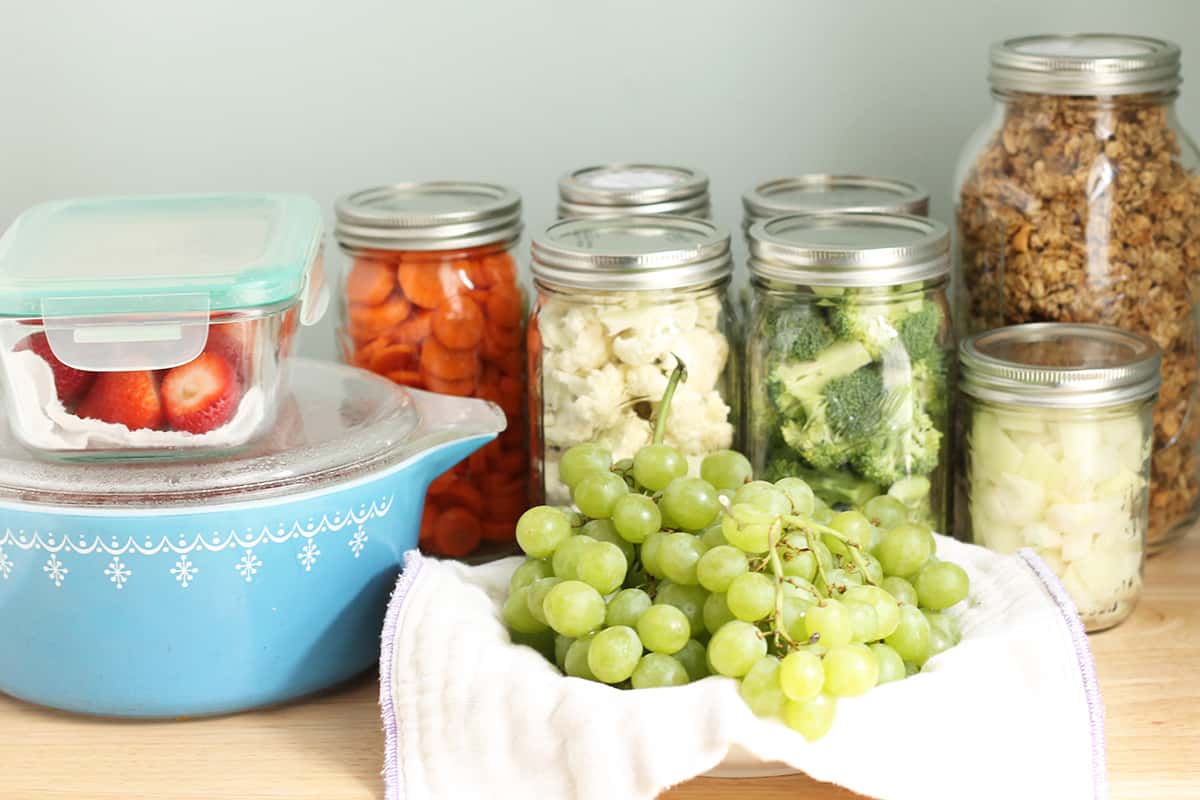
How to Meal Prep
Most Sundays, I spend a little time during afternoon nap time getting organized for the week ahead. For me, this doesn’t look like “meal prep” as you might see it on social media though, because I also want to have time to rest. My method is to plan our dinners and any homemade snacks, prep some produce, and have shortcuts on hand to make cooking easier throughout the week.
There are so many ways to meal prep that work for your phase of life and your family, so I’m going to share some of my best tips from the past decade of being a parent in the hopes that they help ease your load a little.
Your toddler won’t eat? Help is here!
Sign up for our email updates to get tips and ideas sent to your inbox.
How to Meal Prep, Step-by-Step
Here’s a look at the basics of meal planning and meal prepping so you can see what the process is.
- Plan your meals for the week so you have a framework for what’s ahead. We use a category system, so I choose basic categories like “tacos,” “pasta,” “chicken” so I have a starting place, yet the plan remains flexible.
- Take stock in the kitchen and make a grocery list to refill any essentials—and to make sure you don’t forget anything you need for recipes you plan to make.
- Get groceries! I like to keep my produce options loose until I see what’s on sale since it’s always fun to snag good deals and get the freshest-looking food. So I set meals, keep the sides and veggie options flexible, and decide that aspect at the store. If you know you need 5 veggie sides for 5 family dinners, that can make this part easy to fill in.
- Optional: Prep your produce and/or batch-cook some grains. See below for more detail (and do as much or as little as you like).
- Optional: Make any homemade snacks or breakfasts for the week, like a batch of muffins or granola.
My Cookbook
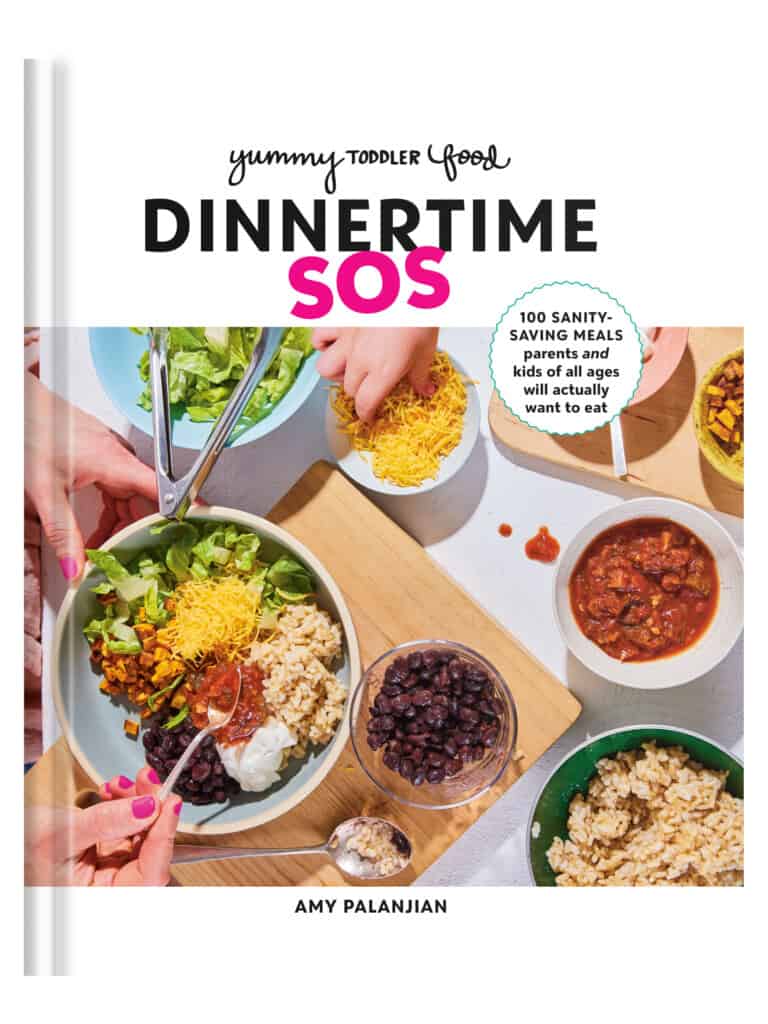
Dinnertime SOS
100 Sanity-Saving Meals Parents and Kids Will Actually Want to Eat.
Do I have to spend all weekend prepping meals?
Absolutely not! You can do as much or as little as you like and pick and choose what you like to focus on. For me, cleaning and chopping the produce we’ll eat for dinners is where I devote my time because I find that makes it so much easier to pull a meal together at the end of the day.
(Only once in my life have I made full meals ahead of time, though I know a lot of people meal prep that way.)
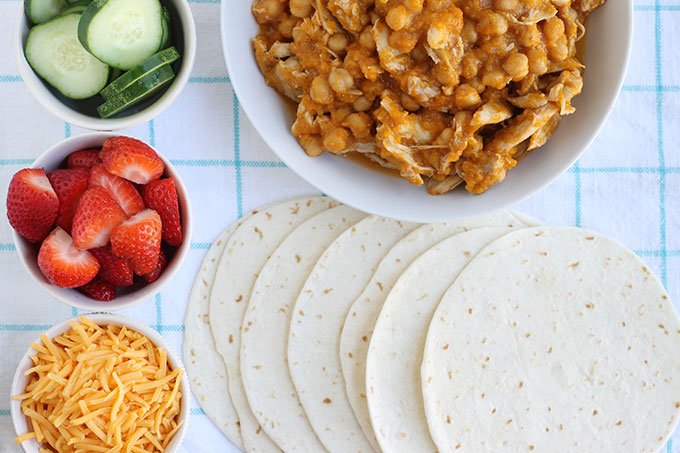
Meal-Prepping Tips to Pick and Choose
I am not here to tell you what you have to do, but I will share options that you may choose to do if they work for you and your family. My top 10 tips in depth are below for you.
Tip 1. Plan Your Meals (At Least Generally)
Knowing what you’re going to have each night is such a comfort because it saves mental energy at the end of the day. We know what needs to be done to make the meal come together, and it helps to ensure all the food we bought at the grocery store is put to good use.
Even if you don’t want to get into the nitty-gritty of exactly what you’ll be having each night—though you certainly can have specific recipes ready if that helps you!—planning out which night will, say, use that chicken breast you bought, can be really helpful to your mind AND to your budget.
Tip 2. Consider Theme Nights
If you’re looking for a way to make planning meals easier, consider working in a few regular themes each week. We do Mexican on Tuesday nights, pizza on Fridays, and pasta most Sundays. These anchor my week and make it much easier to decide what’s for dinner since there are parameters already in place. You could also have taco night, soup night, sandwich night, leftover night, kid’s choice … the options are endless!
I typically write out meals like “pasta” or “stir-fry” so I broadly know what’s in store. I have a general idea of what I want to make without the need for much detail.
This is a nice way to ensure the kids will be exposed to a variety of flavors throughout the week, on top of making weekly meal planning easier for you!
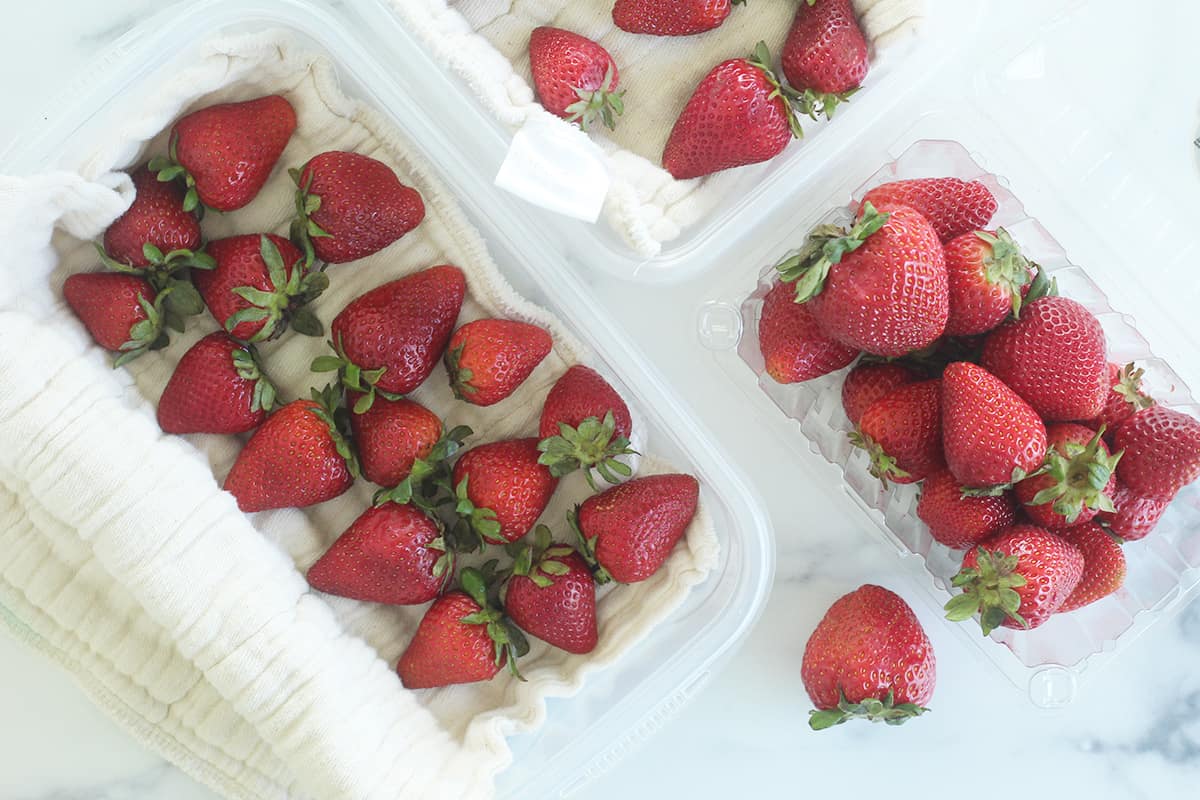
Tip 3. Prep Your Fruit
Prepping fruit is a fantastic way to have healthy snacks at the ready and ensure you use your produce on time. I like to clean blueberries, strawberries (stems removed, otherwise uncut), and grapes and place them into airtight containers lined with paper towels or thin cotton kitchen towels to ensure they stay fresh for about 3 days. Towels help to absorb excess moisture.
This allows for quick and easy snacks or dinner sides without any prep in the moment. My oldest can also just help herself to a snack or appetizer whenever she needs it! You can store chopped pineapple or mango in containers without a liner since you want them to be juicy.
TIP: Avoid doing this with fruit that browns like apples, pears, or bananas.
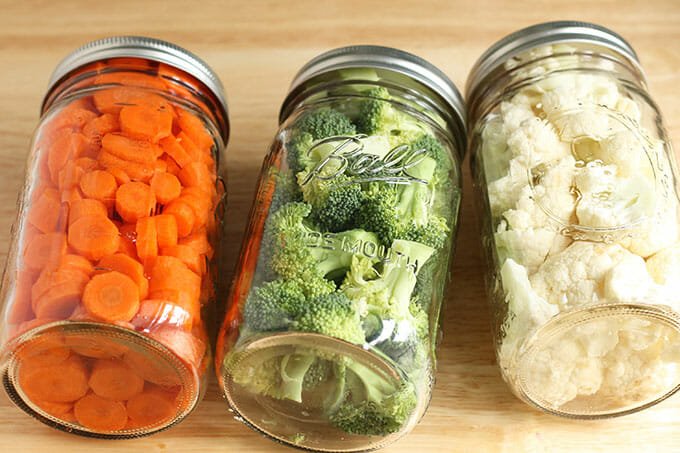
Tip 4. Prep Your Veggies
Rather than setting up the huge task of actually cooking full meals ahead of time, I love to just prep my produce. This means washing, drying, and chopping the veggies we’ll be eating all week and storing them in airtight containers. I typically use quart-size mason jars. If everything is very dry, the veggies should last for 3-5 days.
This works well for broccoli, cauliflower, carrots, celery, onions, green beans, and bell peppers. Then, when it’s time to cook dinner, you can simply dump a jar into a pot, roasting pan, or skillet. It’s so easy! And it’s such a good way to avoid wasting produce—because everything has a purpose!
TIP: Avoid prepping any veggies that brown when cut like potatoes and sweet potatoes.
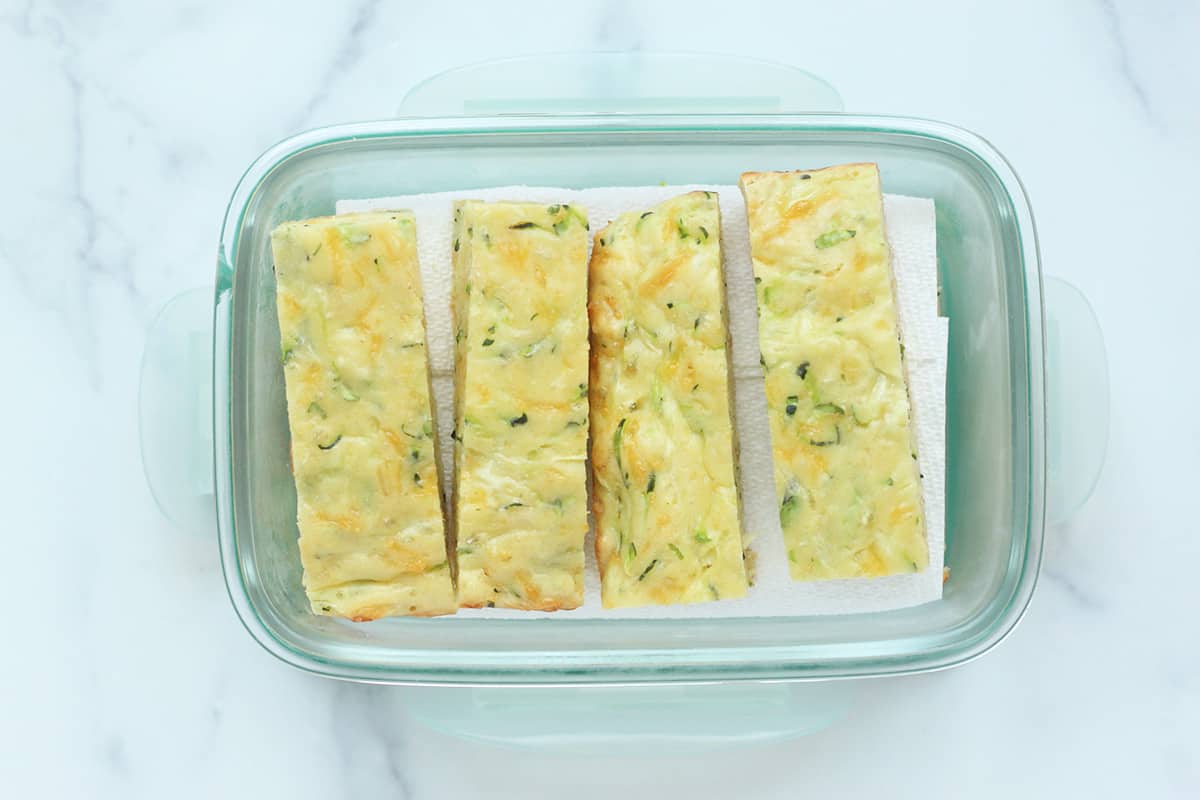
Tip 5. Make One Meal Ahead
If you really want to get ahead, try making one whole meal ahead of time. This pays off without all of the upfront time that meal prep sometimes takes. I typically do this for our Thursday dinners since that’s the night that my oldest has tumbling and we eat in shifts. Some great recipes for this are Spinach and Cheese Pizza Rolls, Hidden-Veggie Meatballs, Broccoli Tots, and Slow Cooker Beef Burritos.
TIP: You can also simply make twice as much chili or soup, stick half into the freezer, and thaw it out for quick homemade dinner.
Tip 6. Thaw Your Meat
No matter how many nights a week you serve meat, if you have it in the freezer and forget to take it out when you need it, you might have to scramble for a replacement. I try to pull all of the meat I’ll be cooking during any given week on a Sunday—or at least the meat for the first three nights—and make sure that I have it thawing in the fridge. (For days later in the week, I move it to the freezer in the kitchen, as opposed to our deep freeze in the basement where I’m bound to forget it!)
TIP: To safely thaw meat quickly, submerge it in cold water for about an hour, changing the water every 30 minutes or as needed. You can thaw small cuts of meat in very hot water for 8-12 minutes. Thawing at room temperature for hours is not considered to be safe.
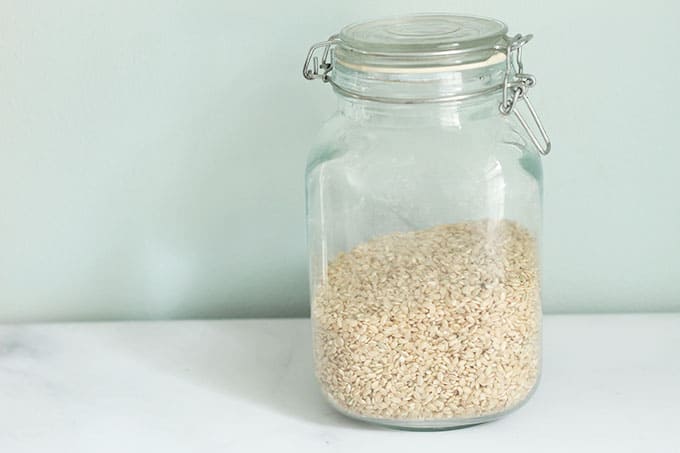
Tip 7. Batch-Cook Grains
The next time you make rice or quinoa, make a double batch. Let it cool fully and store the second meal’s worth in an airtight container in the freezer for a future meal. (I use the 4-cup square containers from Ziploc.) Pull it out in the morning and let it thaw, then simply reheat to serve. So easy! This is also a great way to have an easy-to-thaw side for any last-minute meal.
TIP: This works equally well for soup, chili, marinara sauce, beans, bread, muffins, and pizza dough.
Tip 8. Consider Lunch
If you pack your lunch or your kid’s lunches, consider what you and they like to eat when planning and cooking meals—and make enough leftovers for lunches! Whenever I make pasta, I always make more than enough since everyone in my house who needs a packed lunch will happily eat it, and then I have less work to do!
Plus, there’s something exciting about getting to take some pasta to school.
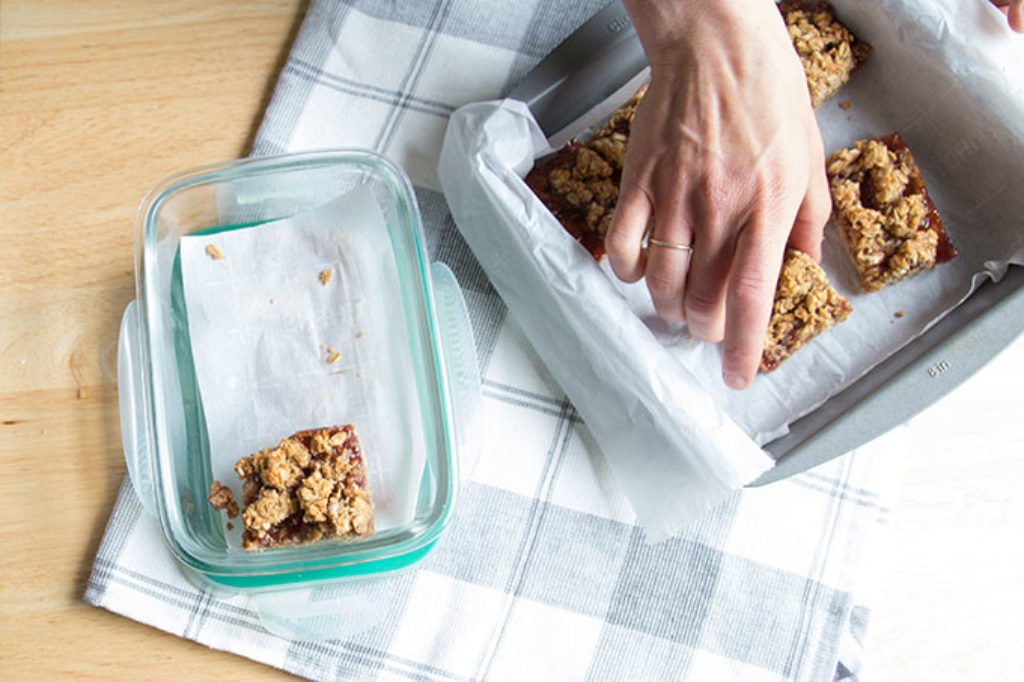
Tip 9. Make Breakfast or Snack
One thing we love to do at my house is to prep one thing for breakfast or snacks than everyone loves. Hard-cook a dozen eggs. Make a batch of granola or overnight oats or granola bars. Having one breakfast item or homemade snack ready can make those mealtimes easier, too. (You can also just have store-bought versions of these foods accessible for a similar effect if you don’t want to cook more.)
TIP: I love making a batch of healthy muffins or breakfast bars so I always have an option in the freezer ready and waiting.
Tip 10. Stay Flexible
There will always be something that comes up, so remember that none of this is set in stone. The more you can make a few of these things a habit, the easier all of this will be, but know it’s 100% OK to adjust! Serve leftovers instead of cooking if you wind up with more than you expect. Make sandwiches one night if you’re exhausted, and save the planned meal for the following night.
Swap the plan for Tuesday and Wednesday if everyone is craving the next day’s menu, change around veggies, etc. There are no real rules here, so remember that you can change your mind if you want to!
Even if you pick just one of these tips, doing that one small thing to get ahead will for sure help in the daily challenge of feeding your family.
Best Meal-Prep Tips
- Do what works for you and your family at any given phase, and never feel guilty if someone else chooses another way.
- Prep one veggie to use during the week to save some time on busy weeknights.
- Keep shortcuts on hand for easy cooking including frozen veggies, simmer sauces, pesto, and frozen nuggets and dumplings as your family likes.
- Prep snack or breakfast options for the kids if that helps you the most.
Related Recipes
I’d love to hear your tips or feedback on mine, so please comment below to chime in!
This post was first published December 2019.
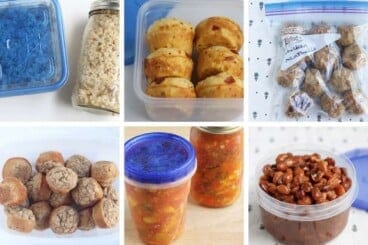
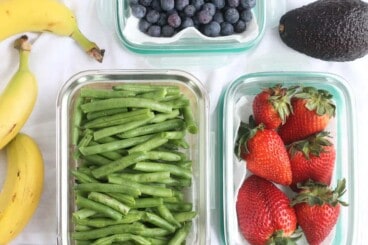

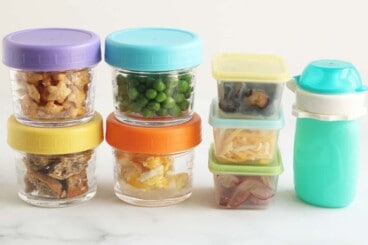
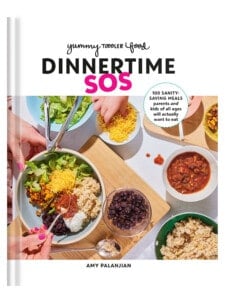
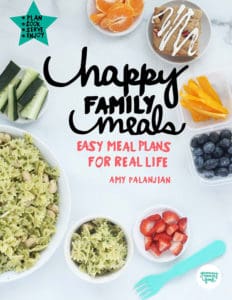
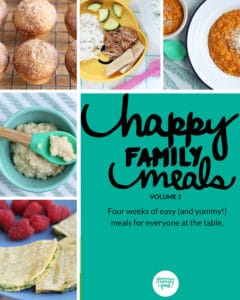
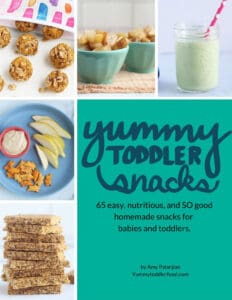














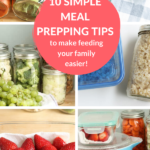
Hello,
Im a nanny just starting a new job that includes meal planning. The family would like me to meal plan only
for the 12 month old baby, excluding the four year old sibling, who seems to be a picky eater. I love to cook, and meal
plan for myself, cooking on Sundays for my week. However, this is a first. Would you start by cooking a few meals,
freezing left overs, and go from there?You have some wonderful recipes! I was thinking of adding toddler muffins as
well. Its a bit tricky, as my cooking will be done at nap time. Thank you!
Hi! What a fun challenge. I would yes, start with saving leftovers and then work in foods like muffins, meatballs, different sauces for pasta, overnight oats, and things you don’t really need to prep ahead like smoothies, fruit cups, yogurt, cheese, and maybe deconstructed tacos or grain bowls. If I was doing this, I would make a monthly meal plan so I could keep track of what I have stashed in the freezer and be sure to work those foods in. I have free templates in my Resource Library you can grab and also feel free to email me yummytoddlerfood at gmail dot com if you want to chat more—I’d be happy to help! (Maybe the four year old will like what they see and will want to try some of the foods!) Good luck with the new job!
On the root veggies, I part boil them then put them in an airtight container with olive oil, lemon juice, paprika and oregano and then roast them for 20 mins the night I need them, along with chicken or fish. Works a treat
Thanks for sharing!
This sounds like a great idea but I have a few questions.
1) From your experience, what veggies other than sweet potato can you not precut?
2) Do you dry the vegetables after you cut them also? Because sometimes they are moist.
I would avoid doing this with any potatoes, tomatoes, eggplant, avocado, mushrooms, or anything that’s super ripe and needs to be cooked immediately. If something seems moist, yes, dry it. You can also line containers with a thin towel or paper towels to help absorb any excess moisture!
In one of the pictures at the top it looks like you have squash precut…. Will it brown like sweet potato? Thx!
In my experience, it does not brown at all! It’s butternut squash in the photo:)